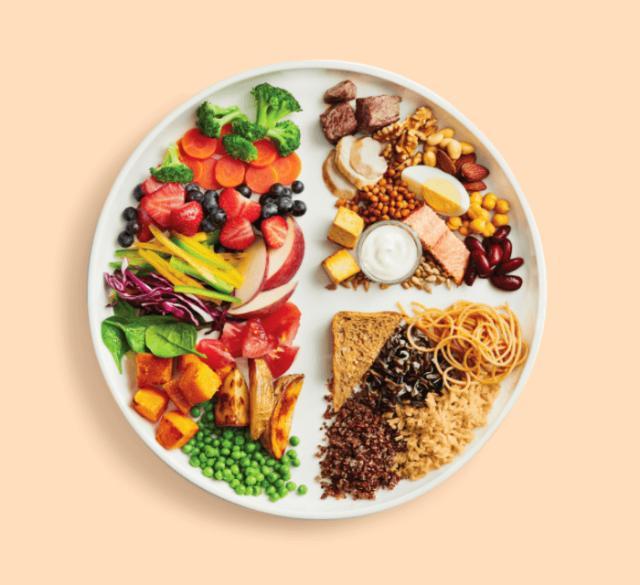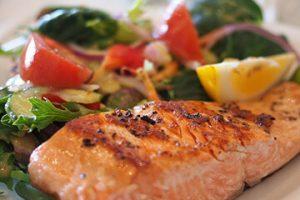What is the glycemic index?
A phrase that compels you to look for special dishes and review the product – to determine if you can eat it or if you better leave it on the store shelf. Let’s find out what the glycemic index (GI) is and why it’s needed: It’s a measure of the relative effect of carbohydrate-containing foods on blood sugar levels compared to glucose (glucose is 100%). The more processed the product, the higher its GI, the more fiber or fat in the food, the lower it is.
Normally, the focus of determination of the GI level are those to which we refer to carbohydrates: these are cereals, vegetables and fruits, pasta, potatoes, sweets and drinks. Depending on their level, the products are divided into three categories:
- 1. High GI: from 1 to 55;
- 2. with a medium GI: from 55 to 69;
- 3. Low GI: above 70.
Why do you need to know the glycemic index?
In short, you can live without this information. The glycemic index can be useful for people with type 2 diabetes if they are not aware of other healthy diet options (the plate method or the palm method). Knowing the GI of a product, changes in sugar levels and satiety can be assumed: foods with a high GI will help you feel full quickly, but not for long, foods with a low one, on the contrary, they do not give satiety immediately, but remain longer.
What affects the glycemic index
The GI is influenced by many factors. The same product under different conditions may have a different glycemic index. This is what affects you:
- ● Degree of processing: hulled and germ-free cereals have a higher GI than whole grains. Refining example: white rice, white flour and derived products.
- ● Wholeness: Finely ground grains are digested faster than larger pieces. Example: whole grain oatmeal and flour from it.
- ● Amount of fiber: High-fiber foods contain more fiber, which is indigestible, than carbohydrates, which are absorbed in the intestines. Due to slow absorption, the rise in blood sugar is slow.
- ● The content of fats and proteins slows the absorption of glucose, and therefore reduces the GI. In other words, if we add meat and vegetable salad to the fries, the GI of our dish will be lower.
- ● Method of preparation: for example, the GI of a French fry will be higher than that of a whole refrigerated potato; pasta cooked al dente is digested more slowly and has a lower GI than overcooked pasta.
- ● Ripeness: Ripe fruits and vegetables have a higher GI than green ones.
However, some foods have a nondescript glycemic index. Among them, ice cream, which has a low GI, contains many saturated fats; Potatoes, on the other hand, have a high GI but contain nutrients like potassium, phosphorus, magnesium, calcium, and fiber. Therefore, an indicator does not give us a complete picture of the product.
To thoroughly evaluate a carbohydrate product, it is worth considering: the presence of whole grains and nutrients, the content of fiber, protein, and fat, the degree of processing, and the presence of added sugar. This will definitely give even more bonuses to the fries and carrots than just the GI.
If the glycemic index does not contain important information, then there is another, more useful indicator: the glycemic load. For healthy people, such as the glycemic index, it is not so important (there are more understandable guidelines), but for people with type 2 diabetes, endocrinologists consider it more indicative.
glycemic load
The glycemic load (GL) is a measure that takes into account the amount of digestible carbohydrates in a serving of food. For diabetics, this figure, along with total carbohydrate intake, can be important in maintaining optimal blood glucose levels (consult a doctor for an accurate recommendation). The glycemic load is usually not calculated for a single product, but in total per day.
GN, as well as GI, is divided into three groups:
- 1. low: 10 and less;
- 2nd medium: 11-19;
- 3. tall: 20 and over.
The GN value is more indicative than GI, because. a low GI food may have a high GL. This means that this product is likely to cause a sharp spike in blood sugar, but the index will not tell us. For example, watermelon has a high glycemic index of 80. But there are so few carbohydrates per 100g of watermelon that its glycemic load is only 5.
You can find out using the following formula: GL = GI x (grams of carbohydrates per serving) / 100
List of low glycemic load foods
- ● cereals with bran;
- ● wheat tortilla;
List of foods with a medium glycemic load
- ● brown rice;
- ● Rice cakes;
- ● wholemeal bread;
- ● Wholemeal pasta.
List of high glycemic load foods
- ● baked potatoes;
- ● French fries;
- ● Refined breakfast cereals;
- ● Drinks with sugar;
- ● basmati rice;
- ● Pasta made with white flour.
Should I avoid high GI or high GL foods?
As it was already clear from what was written above, the most harmless are included in the number of products with a high GI. For example, carrots, pumpkin, pineapple, watermelon, melon, millet. Other characteristics of the listed products give us completely different information: they are full of vitamins, minerals, fiber and flavor. It would be sad to deprive yourself of such a set of benefits!
The three lists of foods with different levels of GN contain those that can also be regularly included in our diet. Even sweets and sugary drinks have a place: there is no clause in the recommendations for healthy people that prohibits them. But there is a recommendation to limit sweets to 5-10% of the total daily diet; the amount depends on the level of physical activity.
Another point in defense of the legalization of everything, including sugary products, prohibitions violate our relationship with food. As weird as this phrase sounds, this is how it works: when we want something, but we don’t allow it, we want that product more. With any opportunity to eat it, it is more difficult to eat a small portion, which leads to overeating. If we set even stricter rules, we enter a vicious circle.
weight loss products
How, then, to lose weight, if you can do everything and better not limit yourself in diversity? One of the most common questions on the subject of nutrition is what to eat to lose weight?
Unfortunately, it is not the individual foods that help you lose weight (it would be convenient to eat broccoli and feel the reduction in volume), but the quantity of what we eat and the balance in the combination of the different food groups. We can also influence the daily calorie intake, because only the correct caloric deficit helps to lose weight without problems. And we don’t need to count calories for that. You can use the following rules:
- ● eat enough vegetables, they are usually low in calories;
- ● do not exceed the rate of fat – control the amount of saturated fat, add a small amount of oil to meals;
- ● remember that a serving of cheese is 30 g, unlike other protein products;
- ● a teaspoon of peanut butter, which was “intercepted” on the way from the workplace for a glass of water – also considered – add to food, try not to bite;
- ● We eat when we are hungry and finish the meal when we feel a little full, optimally when we are about 80% full. This saves you from biting.
It turns out that nutrition for weight loss should be varied! And not only for weight loss, but also for health and happiness.
How to eat the right diet
An adequate and healthy diet is, above all, a varied diet. Variety is when we have multiple sources of fiber at each meal, eat fish 2-3 times a week, legumes every or most days, experiment with new food combinations including spices, or try new things outside the home.
You can follow the rules:
- 1. It is useful to combine any carbohydrate with foods that contain fiber: vegetables, fruits, legumes, nuts and seeds: this GI of the entire portion is reduced and brings us closer to balance.
- 2. At each meal, fill half your plate with vegetables, herbs, or fruit. You can use the principle of the rainbow: the more colors, the better.
- 3. It would be good to add protein to the carbohydrates already mentioned above and other fiber options: meat, fish, legumes, cottage cheese, tofu: protein, along with fat, prolongs satiety.
- 4. We prefer whole products that have undergone minimal processing. This applies to carbohydrates, among which those with shells have the highest nutritional value for us, meat -for him a less preferred option-, sausages and other products that can go through several stages of preparation.
- 5. For a variety of flavors, add spices to dishes. The taste is also important!
- 6. We delight in a variety of textures: food is soft, crunchy, creamy, porous, brittle. Combine and enjoy!
These rules are the basis of all dietary recommendations: for healthy people and for those who have diseases. In any state, it is important that we follow the balance of consumption of proteins, fats and carbohydrates. For clarity, it is made in the form of a plate.




